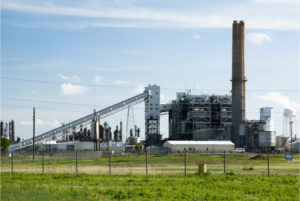The winter weather hitting Texas this year has shown that the “transition” energy combination of renewables and gas has flaws. The Wall Street Journal writes:
Texas has about 30,000 MW of wind capacity, but winds aren’t constant or predictable. Winds this past month have generated between about 600 and 22,500 MW. Regulators don’t count on wind to provide much more than 10% or so of the grid’s total capacity since they can’t command turbines to increase power like they can coal and gas plants.
Wind turbines at times this month have generated more than half of the Texas power generation, though this is only about a quarter of the system’s power capacity. Last week wind generation plunged as demand surged. Fossil-fuel generation increased and covered the supply gap. Thus between the mornings of Feb. 7 and Feb. 11, wind as a share of the state’s electricity fell to 8% from 42%, according to the Energy Information Administration (EIA).
Gas-fired plants produced 43,800 MW of power Sunday night and coal plants chipped in 10,800 MW—about two to three times what they usually generate at their peak on any given winter day—after wind power had largely vanished. In other words, gas and coal plants held up in the frosty conditions far better than wind turbines did.
It wasn’t until temperatures plunged into the single digits early Monday morning that some conventional power plants including nuclear started to have problems, which was the same time that demand surged for heating. Gas plants also ran low on fuel as pipelines froze and more was diverted for heating.
“It appears that a lot of the generation that has gone offline today has been primarily due to issues on the natural gas system,” Electric Reliability Council of Texas senior director Dan Woodfin said Tuesday. The wind industry and its friends are citing this statement as exoneration. But note he used the word “today.” Most wind power had already dropped offline last week.
Gas generation fell by about one-third between late Sunday night and Tuesday, but even then was running two to three times higher than usual before the Arctic blast. Gas power nearly made up for the shortfall in wind, though it wasn’t enough to cover surging demand.
Between 12 a.m. on Feb. 8 and Feb. 16, wind power plunged 93% while coal increased 47% and gas 450%, according to the EIA. Yet the renewable industry and its media mouthpieces are tarring gas, coal and nuclear because they didn’t operate at 100% of their expected potential during the Arctic blast even though wind turbines failed nearly 100%.
The policy point here is that an electricity grid that depends increasingly on subsidized but unreliable wind and solar needs baseload power to weather surges in demand. Natural gas is crucial but it also isn’t as reliable as nuclear and coal power.
Politicians and regulators don’t want to admit this because they have been taking nuclear and coal plants offline to please the lords of climate change. But the public pays the price when blackouts occur because climate obeisance has made the grid too fragile. We’ve warned about this for years, and here we are.
Read more here.

